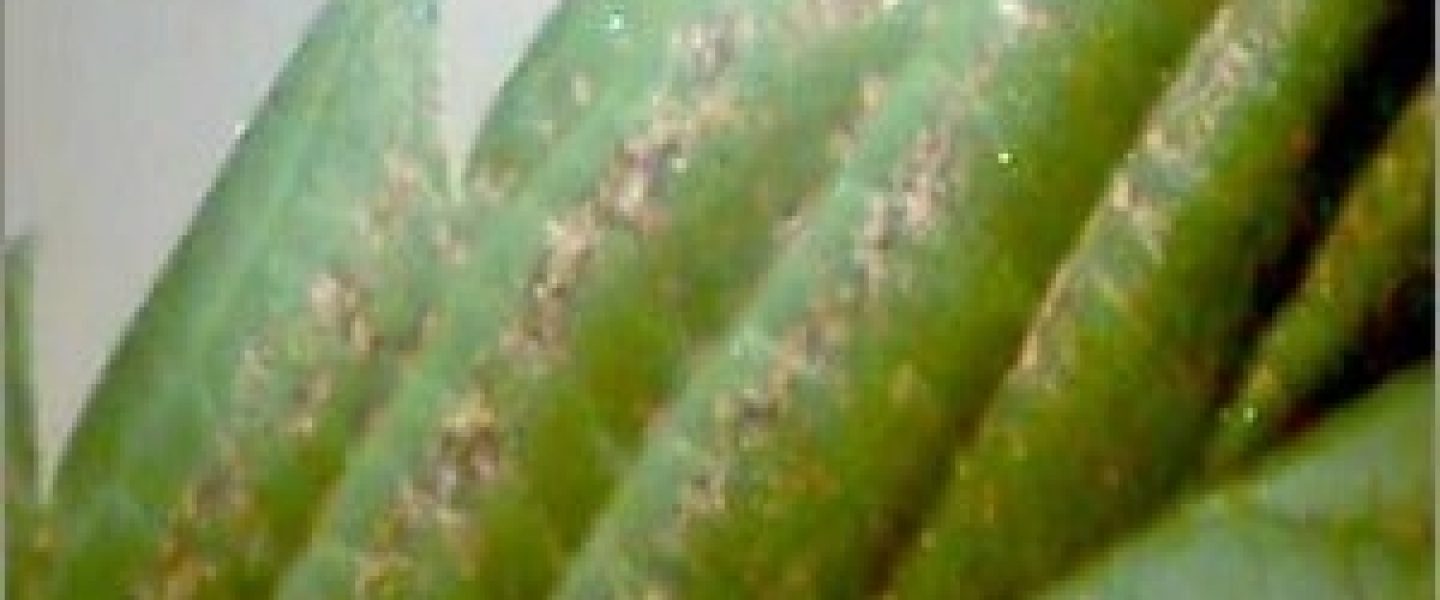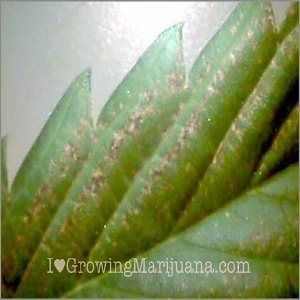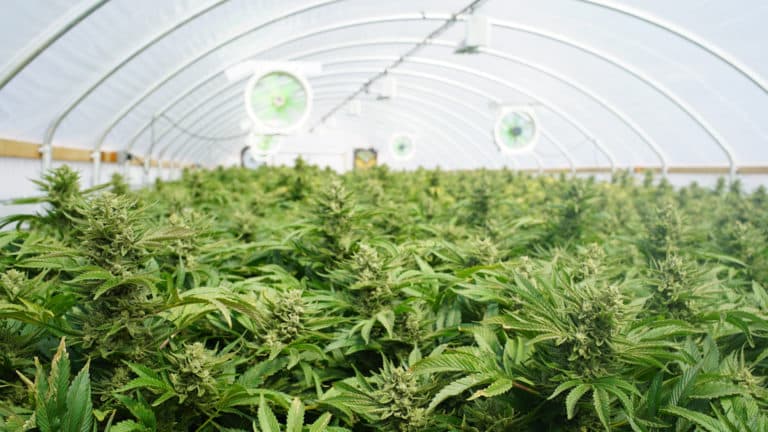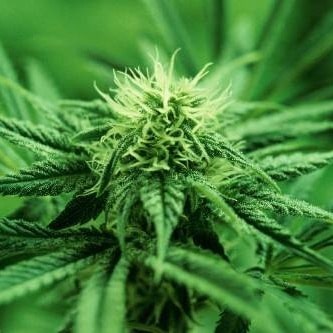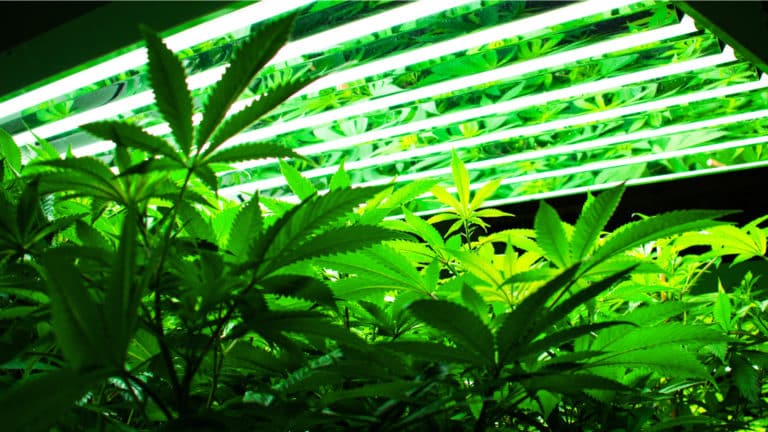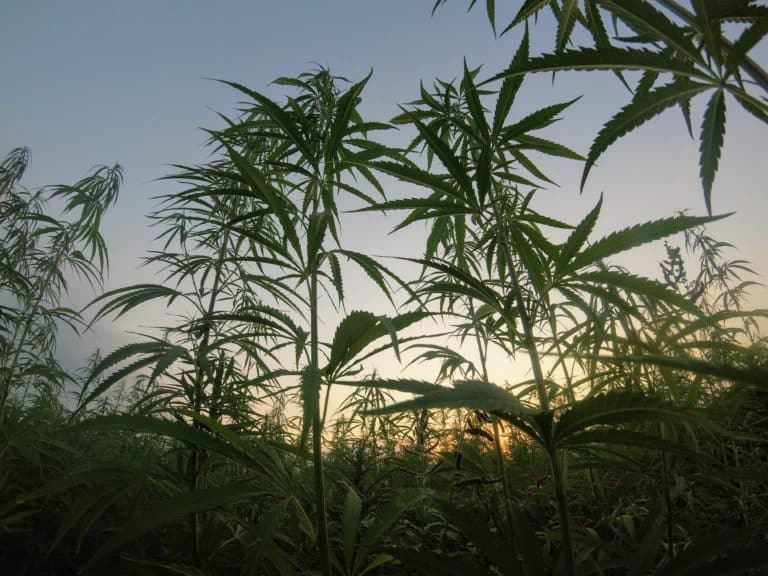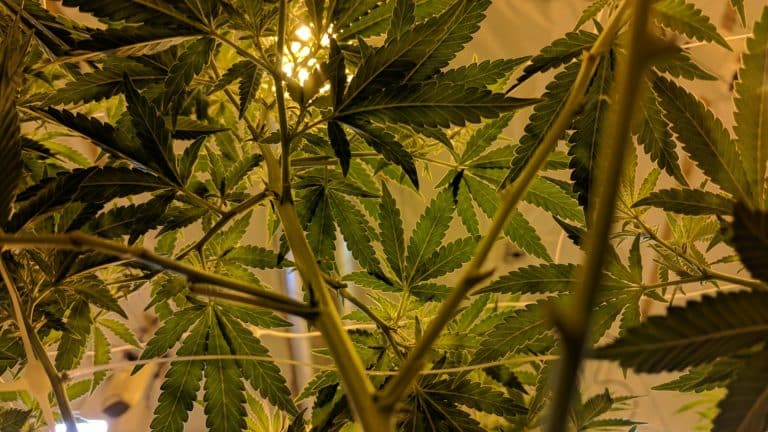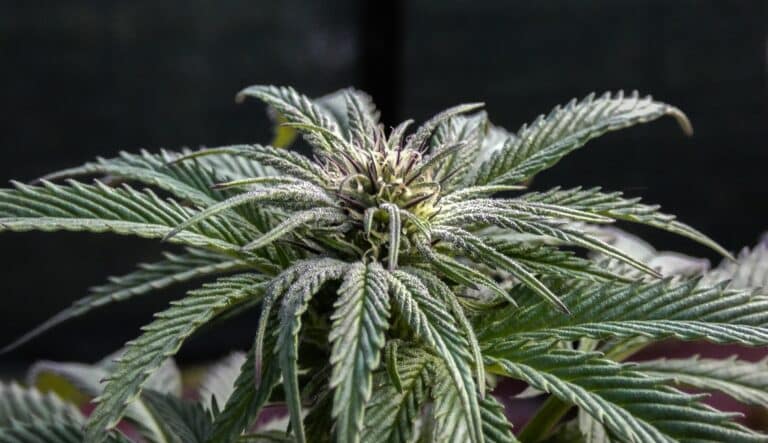Calcium deficiency
Calcium deficiencies are rare for outdoor marijuana growers, unless the soil is too acidic like in pinewoods. It can occasionally be found in planting mixes but is considerably more frequent in hydroponic systems. If a soil-less medium has not been infused with lime (a large source of calcium), a calcium deficiency may occur.
Certain water sources (distilled, reverse osmosis, and tap water) may not have large quantities of dissolved calcium. Calcium deficiencies can occur if you do not supplement this water with calcium.
The signs of a calcium deficiency include:
- Dark green leaves
- Large, tan necrotic spots
- Crinkling young shoots with purple or yellow colorations
- Weak stems and branches (easily cracked)
- Underdeveloped root system
- Bacterial and root diseases
Many of these issues start in old growth, but they eventually migrate to newer growth (making calcium a semi-mobile nutrient).
It’s important to keep calcium quantities at a safe level. It helps keep plant cell walls, stems, branches, and stalks healthy and sturdy. Root hair growth is also aided by calcium. Calcium helps facilitate the uptake of the macronutrient potassium as well.
As with any nutrient deficiency, its best to avoid a calcium deficiency at all costs. You can do that by ensuring that your fertilizer and feeding schedule are always accurate. Using a product like Marijuana Booster can certainly go a long way in helping you achieve that goal, they’ve got a perfect watering schedule. But, you can also use products like dolomitic lime or garden lime in the potting soil or planting mixes. This provides calcium and also allows the pH levels to stabilize. Special calcium-magnesium formulas can also be purchased to add to the mix for fast relief. Calcium acetate or calcium-magnesium acetate are also options.
A compound called Calcium nitrate (CaNO3) can also give you a fast acting solution to a calcium deficiency. CaNO3 is very soluble, making it easy for the roots to uptake the calcium. Do not use this during the flowering stage as it will provide an overabundance of nitrogen.
Liquid calcium and liquid lime are both absorbed quickly by the roots. A single teaspoon of hydrated lime in a gallon of water will give you fast absorption. Adding something like dolomitic limestone to the planting mix can also be beneficial over a longer period of time.
If you’re growing outdoors, you should infuse calcium into acidic soils so that they reach the ideal pH range of 6.0 to 6.5. Dolomitic lime, garden lime, fish bones, seashell, and even ground up egg shells can provide calcium to the soil over time.
Gypsum (or calcium sulfate) can help increase the calcium concentration of outdoor soils without manipulating pH that much. Do not add gypsum to soils that have a pH level below 5.5 as it will interact with aluminum (Al) and make the soil poisonous to plants.
It is important to note that many planting mixes and mediums have plenty of calcium. If the pH is too low, then calcium can stand to be added to the mix.
For hydroponic systems, it’s easier to incur a calcium deficiency. Hydro fertilizers might only have small amounts of calcium because water naturally contains calcium. If your water supply has over 150 ppm of dissolved solids, then you should have enough calcium. Anything less than that and calcium and magnesium should probably be added. Get a free guide about marijuana nutrients at this link here.
Liquid calcium and liquid lime are both absorbed quickly by the roots. A single teaspoon of hydrated lime in a gallon of water will give you fast absorption. Adding something like dolomitic limestone to the planting mix can also be beneficial over a longer period of time.
If you’re growing outdoors, you should infuse calcium into acidic soils so that they reach the ideal pH range of 6.0 to 6.5. Dolomitic lime, garden lime, fish bones, seashell, and even ground up egg shells can provide calcium to the soil over time.
Gypsum (or calcium sulfate) can help increase the calcium concentration of outdoor soils without manipulating pH that much. Do not add gypsum to soils that have a pH level below 5.5 as it will interact with aluminum (Al) and make the soil poisonous to plants.
It is important to note that many planting mixes and mediums have plenty of calcium. If the pH is too low, then calcium can stand to be added to the mix
For hydroponic systems, it’s easier to incur a calcium deficiency. Hydro fertilizers might only have small amounts of calcium because water naturally contains calcium. If your water supply has over 150 ppm of dissolved solids, then you should have enough calcium. Anything less than that and calcium and magnesium should probably be added.
Thanks for reading and if you have any problem with your marijuana plants, please send me an email with a picture if possible. Visit my webshop for high quality marijuana seeds.
Source: ILoveGrowingMarijuana.Com


